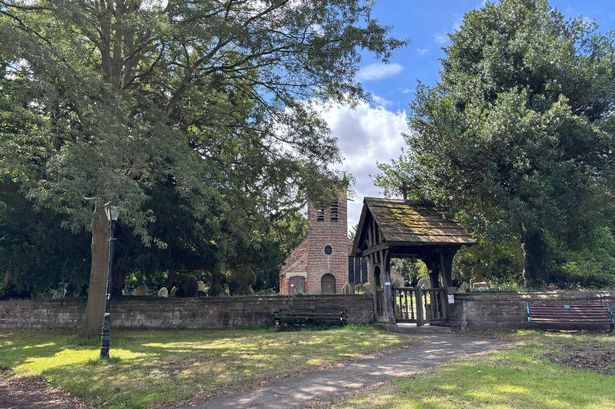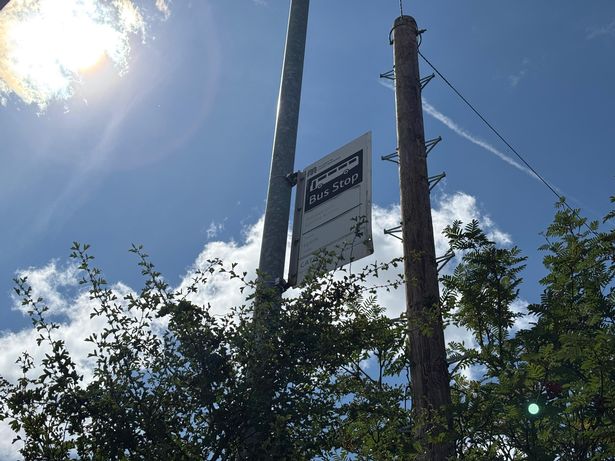It’s one of 148 areas in Greater Manchester without a daytime Bee Network bus – and some include major neighbourhoods like Whalley Range, Rusholme, and Prestwich (Image: LDRS)
(Image: LDRS)
Trees in full bloom provide some welcome shade around the 13th century St Werbergh’s church on a hot July day.
The sun is beating down on fields next to the graveyard. It’s quiet, with only the seldom noise of a car whizzing past disturbing a quintessentially English countryside scene.
But Warburton is actually inside the second-largest city-region in the country, falling within Trafford and Greater Manchester’s boundaries.
Here, crimes are investigated by GMP, residents can vote for Andy Burnham, and buses should be provided by the Bee Network.
Never miss a story with the MEN’s daily Catch Up newsletter – get it in your inbox by signing up here
However, a quick glance at one of Warburton’s half-dozen bus stops will tell you different. The village’s only bus is the number 5 and it runs roughly every 90 minutes — but it’s put on by Warrington’s Own Buses, not the Bee Network.
It means Warburton is one of the 148 areas within Greater Manchester to lack a daytime Bee Network service within 400 metres of someone’s front door. Some 51,309 people live in a Greater Manchester ‘bus desert’, and 388,525 aren’t close to a daytime bus that runs at least every 30 minutes — more than the population of Wigan.
Warburton is in an even smaller club, too, as you have to pay to drive one of the main routes to the 342-person village. The Warburton Toll Bridge, traversing the Manchester Ship Canal, is currently free to use while improvements are being made, but used to charge just 12p for a crossing. Once it reopens later this year, the toll will be £1, with a discount for residents.
It means residents can feel ‘a bit isolated’, according to Jean Crook, 75, who moved in four years ago from Culcheth in Warrington.
 (Image: LDRS)
(Image: LDRS)
“My family lives over the bridge [in Caddishead, Salford],” she told the Local Democracy Reporting Service. “It would be handy to have a bus going out that way.
“For everybody else it would be ideal to have a bus going anywhere else. We are a bit isolated.”
Ana Goel, 66, has been in Warburton for 19 years and says she’s ‘not happy’ about the buses: “When we first moved in, there were three services. We could always rely on getting to the stop and being able to go to Altrincham or Partington. My son would get that to school.
“It seemed there was accessibility to nothing. There is no point to use the bus, so we use the car.
“I definitely would use them to feel more frequent. I go to Altrincham almost every day. I have got an old age pensioners pass, so it would be free. That would be ideal if it was regular.
“It’s just a shame. The government is trying to get people out of their cars, if you had a good bus service I am sure a lot of people would use that.”
 (Image: LDRS)
(Image: LDRS)
Husband-and-wife Dave and Barbara Botterill have called Warburton home even longer, moving in in 1999.
“It’s ridiculous,” Dave said in explaining it’s not just the frequency of the number 5 that makes it unattractive for nights out in Altrincham.
He said: “I would not use it because it goes around the world. It goes through Carrington and Sale. I know you have to look at the cost, but they need to run later.
“It would cost me more to come back from Altrincham in a taxi than it would to buy the beer out there. The £2 charge is a good thing. You cannot criticise that.”
Although some villagers are unhappy, others have adapted to life here. Michael Jones, 29, is one of them: “We were aware that there was no public transport [when we moved], so we made sure we had a car.
“It would be convenient for beers out and family meals. We will not use it every day, but we would use it to get to Altrincham, definitely. It’s great because it’s a transport hub to everywhere else.”
While a rural village on the fringe of the borough may be an obvious candidate for Bee Network bus desertion, some of the other 148 are very much urban zones.
Transport for Greater Manchester, which compiled the list, said areas more than 400m from a stop include Rusholme, Whalley Range, and Beswick in Manchester.
Another one is Sheepfoot Lane in Prestwich, next to Heaton Park and a large interwar housing estate, although it has one thing Warburton doesn’t: the Bowker Vale tram station, that’s been there for more than 30 years.
“I use the tram. It’s really convenient and quick — better than taking a car, especially to town. I usually go to Altrincham on it, “ said Lorraine, who moved in 30 years ago.
 (Image: LDRS)
(Image: LDRS)
Justin McDonnell is another tram user for his nights out: “I never use the bus. The tram is eight minutes’ walk. I only get the tram for a drink in Prestwich or Whitefield. I can get to Besses o’ th’ Barn for £1.90 return.
“On a Sunday I go to the Coach and Horses, for £1.90, it’s £2 for a bus one way and £6 for a taxi one way.”
Others just use cars to get around, including Lisa Clarke, who said she ‘doesn’t really like public transport’, and neighbour Julie, who ‘tends to use the car’.
She added: “I was going into Manchester so I debated using the tram but I paid extra for parking. I’d go to Trafford Centre if I wanted to look around the shops.
“There used to be a 137 bus, that was useful because it went down Leicester Road. Now you’d have to change buses, if there was even a bus. I used to use that when my mum lived there. Now it’s just a straight route to Manchester or walk to Middleton Road for a 59.”
The nearest stop to the Park Road estate, at the Woodthorpe pub, is about a 15 minute walk away, but soon will get weekend 135 night bus services in a trial announced by Andy Burnham this week.
But bigger changes promised through ‘Bee Network reviews’ are set to take years to come to fruition, with major alterations to routes and frequencies for Sheepfoot Lane and Warburton coming in 2027 or 2028 respectively.
Rolling out services to more people will also be done with ‘targeted action’ beforehand, TfGM’s deputy director of bus, Alison Chew, added.
She said: “As the first area to bring buses back under local control we are taking bold steps to reverse decades of decline in the bus market where, under the old deregulated system, too many routes and services were cut and communities left without access to public transport.
“Not only are we safeguarding the services we took over, we are growing the network – with buses running more often to more places than before franchising. We are committed to building a fairer, more connected region through the Bee Network, ensuring as many residents as possible are within 400m – around a five minute walk – of a public transport service.
“As part of our latest connectivity assessment, we’ve identified some areas that do not meet this criteria and therefore lack reasonable access to public transport. We’re now taking targeted action to close these gaps to ensure those people have the same access to services and opportunity as everyone else.”
